Disclosure: Meeple Mountain received a free copy of this product in exchange for an honest, unbiased review. This review is not intended to be an endorsement.
A to Zenith
Playpunk is a new publisher, small but mighty. Coming off the massive success of Captain Flip, Zenith has come into the fold as their sophomore title. I had my first chance to check out Zenith at GAMA (Game and Manufacturers Association) Expo earlier this year, and I’ll be honest, I wasn’t thoroughly impressed. I looked across the mostly white landscape of a modular board with some colorful, Necco wafer-esque planets. It was described as a “push and pull,” tug-of-war game where no two plays shake out the same. I only saw a few demo turns and thought it was neat, but nothing super spectacular. I’m glad to have been humbled many months later, after playing a couple of full games on both Board Game Arena and at Gen Con.
I yearn to grow my collection of two-player games, as I more often play games with my wife. Readers may know that she isn’t a fan of head-to-head games, so that cuts out a good chunk of the offerings. The tug-of-war mechanic treads the line, much like 7 Wonders Duel, Watergate, and Twilight Struggle. Zenith features a space struggle for unification among the humans, robots, and animods. Using agents from all three factions, the race to influence five planets is on.
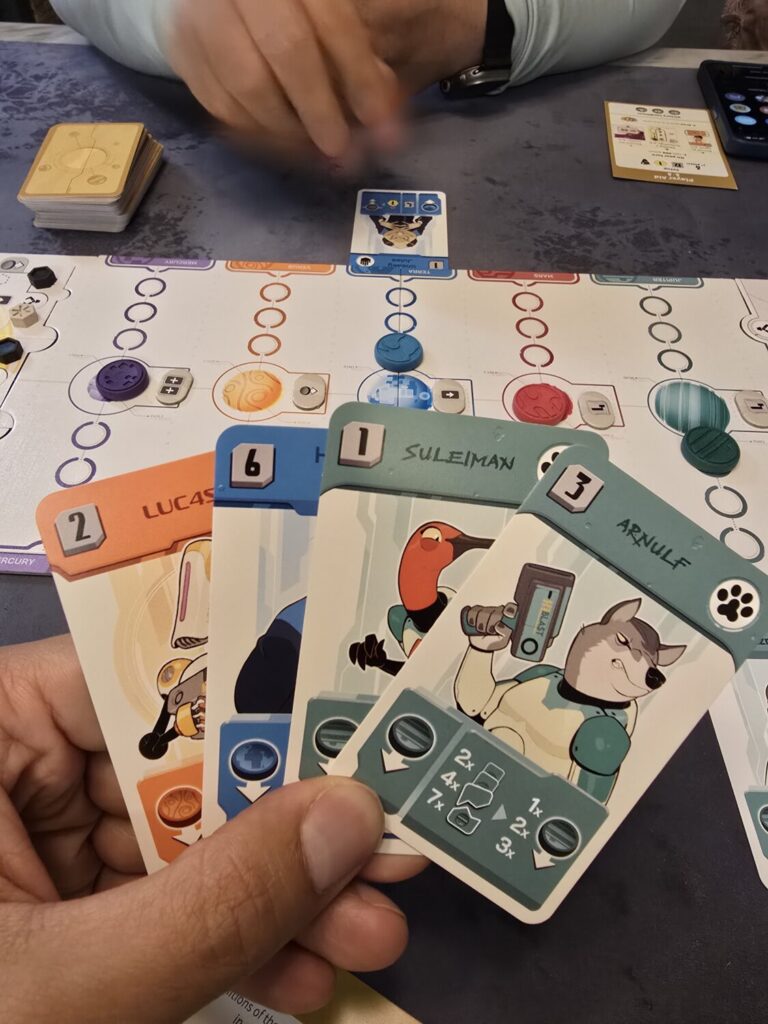
Beam Me Up
Zenith ends in one of three conditions. A player wins if they control three of the same-color planets, four different-colored planets, or all five planets. On a given turn, a player can recruit an agent by paying the cost and playing the card into a specific planetary lane, moving the planet one step closer to their side and triggering other card effects. Subsequent cards played into that lane gain a discount based on how many cards are already there.
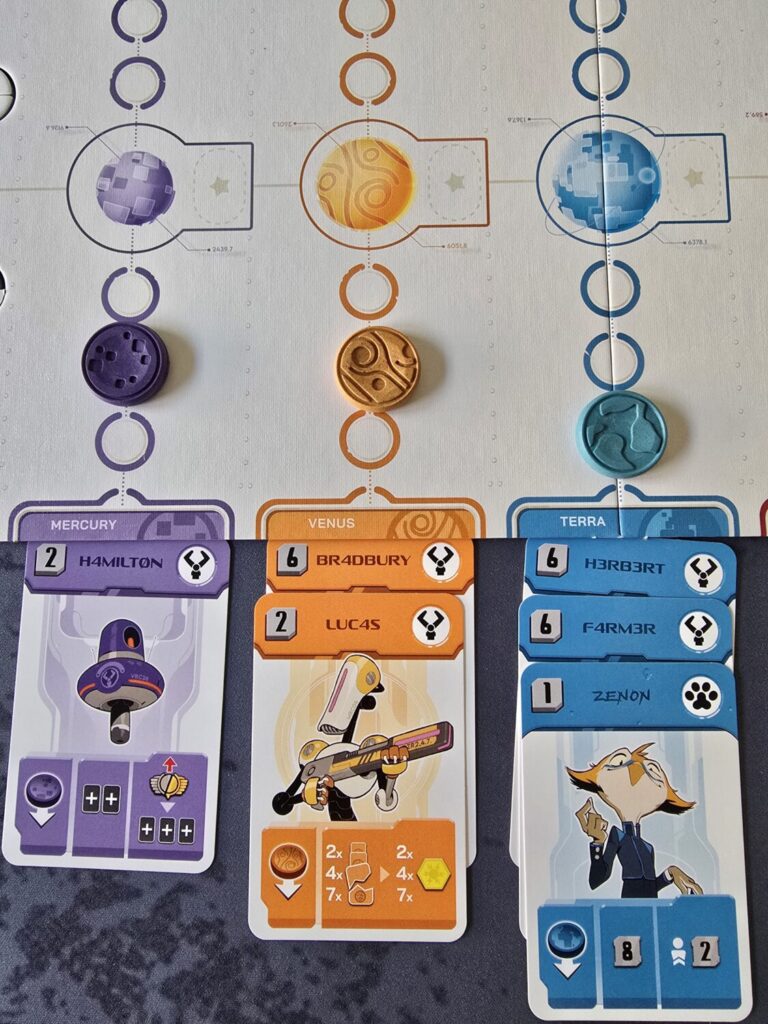
The second action is to discard a card type and receive the “leader” token, along with a resource. This leader token increases the hand size to five, and up to six if upgraded. The last action is to develop technology by spending zenithium, the coveted resource. Each tech track provides a bonus action, in addition to the actions on the lower tiers of that track. Play continues until one of the three victory conditions is met.
Totally Tactical
This game is simply excellent. On the surface, it appears to be an innocent tug-of-war, area control game, but each subsequent play only deepens the strategic decision-making. The overall rules are so simple that they can be explained in just a few minutes. But what lies in wait is a delightful fencing match of thrusts and parries. What seems like a strategic opportunity can be flipped the very next turn, interrupting your plans.
This is a game where you’re constantly watching your opponent like a hawk. You need to adapt to whatever move is made to ensure control isn’t easily lost. The game is all about pivoting in a joust, trying to stay one step ahead.

Heart of the Cards
The cardplay is the core of the game, as the actions within seize control. Some cards seem like no-brainers—pay one credit to gain six—but in fact, each card is an investment into your engine. Playing the same-colored cards inherently makes your engine more effective, as each one becomes a credit discount toward future plays. Some of the most powerful cards cost upwards of ten credits, and in a game where money eventually gets tight, those discounts are an absolute lifeline.
Part of Zenith’s beauty lies in the necessary sacrifices behind powerful actions. Pull a planet three steps toward you to ensure victory or just to live another round? Sure, but it requires discarding your entire column of cards as a sacrifice.
Letting an opponent build out their columns to stack discounts is a sure path to defeat and must be kept in check. The game includes plenty of actions that allow the removal of top cards from the opponent’s tableau or even moving them to your side. As much as you’re jockeying for planets, the cute and cuddly agent cards are also part of the tug.
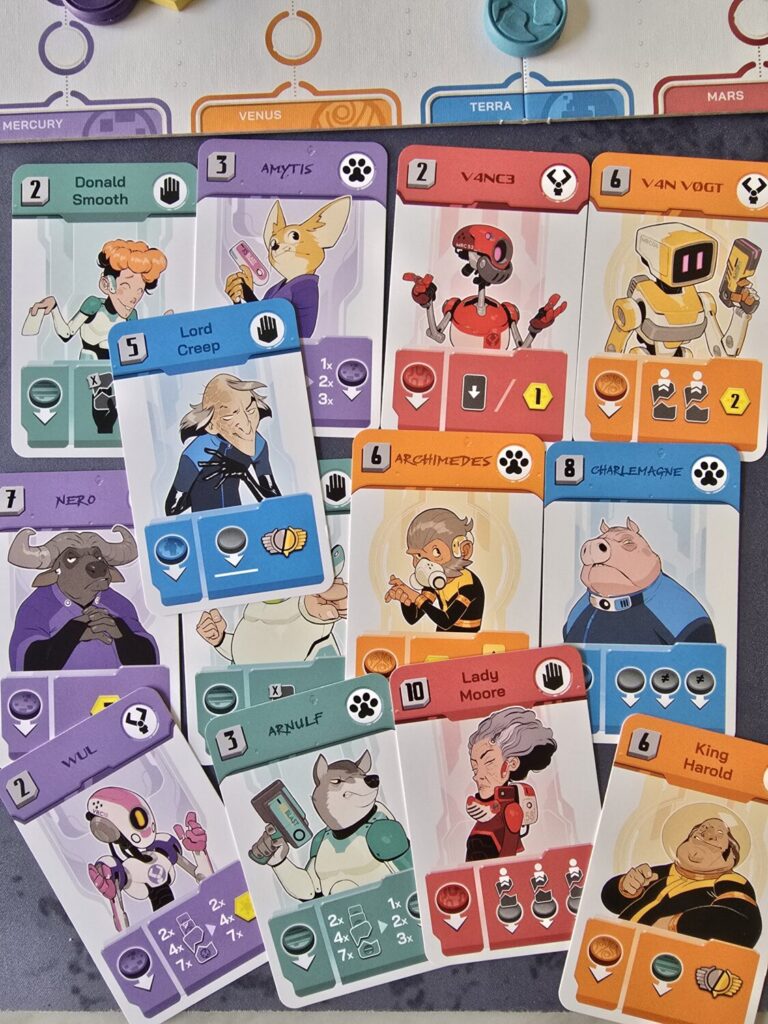
Card draw is very luck-dependent, which can be a turn-off for some. While obtaining cards is easy, getting the right cards can be a challenge. Pair that with a low hand limit (four without the leader token), and you might find yourself treading water if you don’t have the resources you need. This will likely happen to both players more than once, but that’s the perfect time to strike. I can’t tell you how many times I’ve needed just one more credit or one more card to win—only to find myself scrambling. And in that delay? The opponent got the upper hand, or flat-out won.
I love the interactions that happen with some cards. Some require you to have the leader token to trigger extra effects (and are effectively a waste if you don’t), while others require giving something to your opponent to gain a benefit. It all plays into the theme: what’s worth giving up to gain?
Icons Galore
What keeps the game from being a perfect chef’s kiss is the iconography. While there’s a very large player aid for the symbols, there were times when variations of icons interrupted the flow of the game as we paused to interpret. Even after thinking I’d mastered the symbols, a card would show up that sent me right back to the player aid. No kidding, the sheet is larger than the board itself. It’s not a huge setback, but it pushes the game slightly more into the “advanced” category, requiring symbology fluency as a side skill.
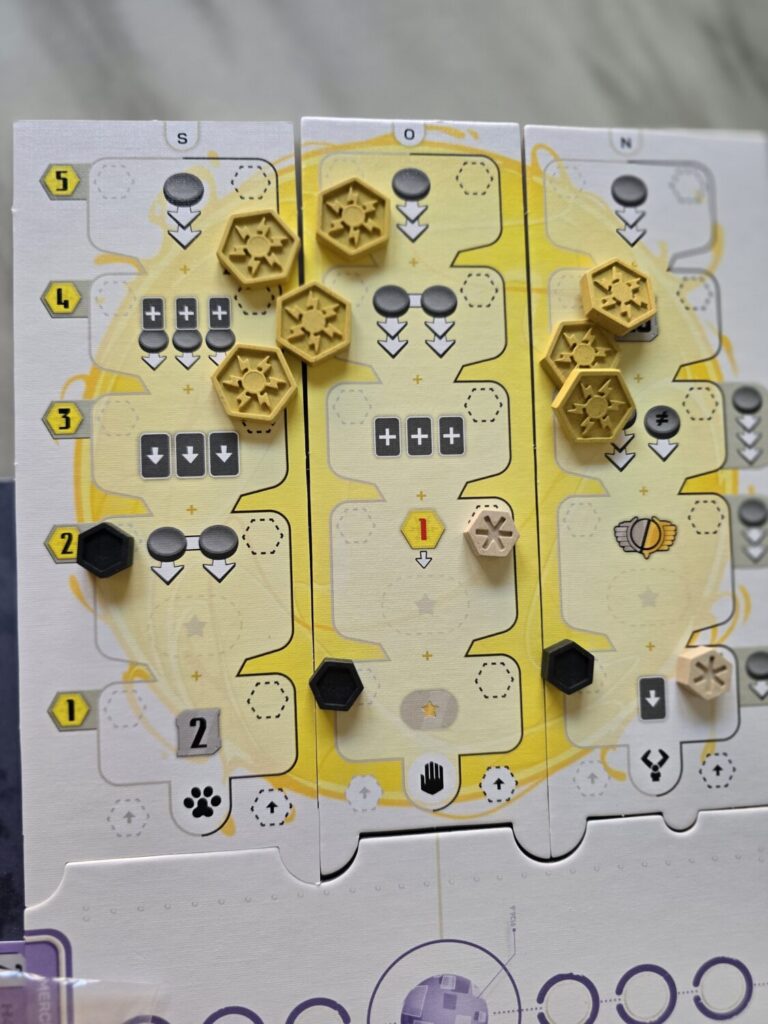
The Original Planet Wafer
Zenith is already in contention for one of my top games of the year. The flow of the game is so smooth and varied that, as I write this, I just want to bust it out and play again. The tech tracks, though not strictly necessary to win, can be a beautiful lifeline of chaining effects that catch your opponent off guard. It feels like a game of chess: all the pieces are on the board, but their utility is shrouded in mystery. There were many moments when defeat felt imminent, only for a cascading combo to put me right back in contention.
It’s just fun. The actions that hinder your opponent don’t feel stabby, so losing something here and there doesn’t feel bad. At first, the actions felt a bit dry when I only saw a few turns at GAMA. Seeing the long-term synergies unfold later revealed how much strategic depth the game offers.
Wait, the game is over, and it’s only been 30 minutes? Is that right? Yes. Yes, it is. The game is so lightning-fast that you immediately say, “Care for a rematch?” There’s so much variety in the deck (and in the different tech tracks) that Zenith will keep bouts fresh for a long time. It’s a well-crafted two-player game that deserves all the praise and more. While the game doesn’t need an expansion, I’m curious and excited about the potential of new twists in this beautiful system.
Admittedly, I haven’t played the 2v2 mode, but a quick glance tells me it wouldn’t have the same shine, since it splits up control of the board. But hey, it’s there if you want to try it out.
I could go on and on hyping up the masterful work that is Zenith, but that’d just take away more time that I’m not pulling those sweet, sweet planetary Necco wafers. Checking this game out is absolutely mandatory.



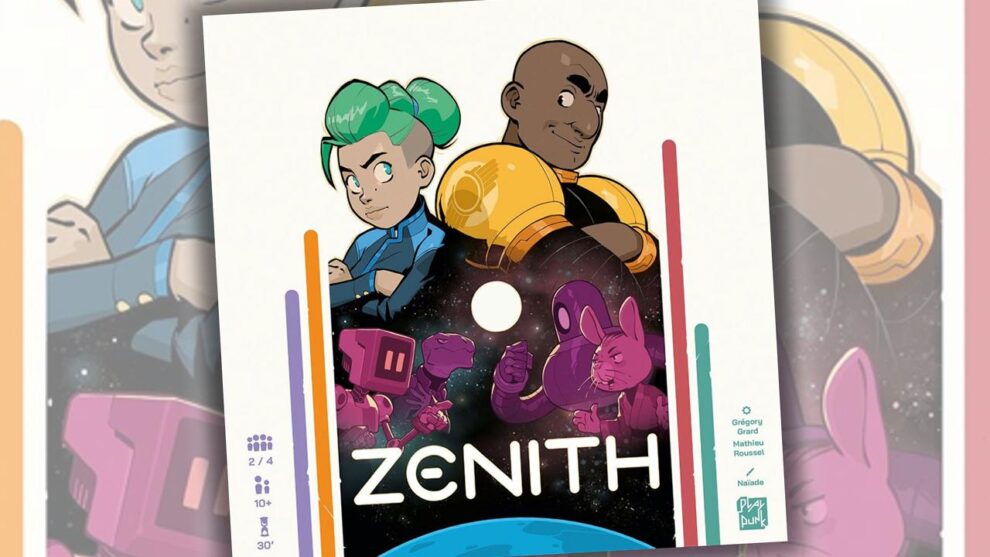



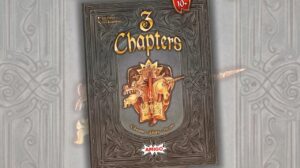
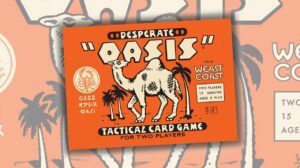


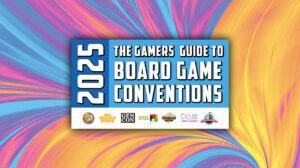

Add Comment